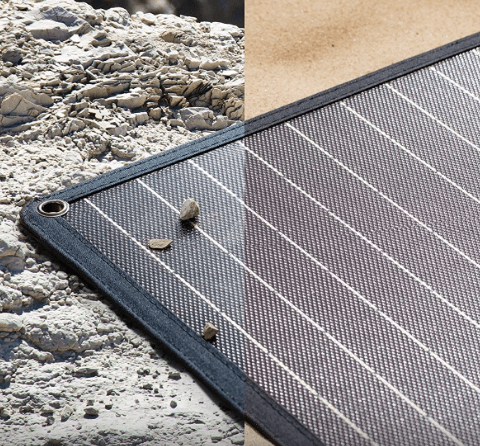How Much Power Is Generated By A 100 Watt Solar Panel
Solar power is changing the way we generate electricity. Solar panels play a crucial role in generating electricity among the various solar technologies available. Many individuals and businesses are considering investing in solar panels to reduce their carbon footprint and save on electricity bills. However, before making such an investment decision, it is essential to understand the potential power output that you can expect from these panels. In this article, we will delve into the fascinating world of solar energy and explore how much power can be generated by a 100-watt solar panel.
100-watt Solar Panel Power
A 100W solar panel generates around 100 watts of power under optimal conditions. This power output can vary based on sunlight intensity, panel orientation, and temperature.
On a bright sunny day, a 100W solar panel can produce approximately 400-600 watt-hours (Wh) of electricity. This is enough to power small devices like smartphones, LED lights, and small fans for a few hours.
In real-world scenarios, a 100W solar panel might generate an average of 300-400 watt-hours per day, depending on your location and setup. This can contribute to powering low-energy-consuming devices or charging small batteries. If you require more power, consider connecting multiple panels in parallel or opting for higher-wattage panels. Remember, maximizing solar energy generation involves proper installation, regular maintenance, and accounting for environmental factors.
Cost of the 100-watt solar panel Power
The cost of a 100-watt solar panel can vary depending on several factors. The brand and manufacturer of the panel play a significant role in determining its price. Some well-known brands may offer you discounts, and their products are popular due to their reputation and quality assurance. For example, Anker 625 Solar Panel (100W) is available at $329.99. The solar panel can convert 23 per cent of sun energy into power, which means this solar panel has high energy efficiency.
Additionally, the solar technology used in the panel can affect its cost. Monocrystalline panels are more expensive than polycrystalline or thin-film options due to their higher efficiency and durability.
Furthermore, market demand and supply also impact the price of solar panels. As renewable energy adoption has grown exponentially in recent years, economies of scale have decreased manufacturing costs for solar panels. As a result, prices have become more competitive, making it a suitable time for homeowners or businesses looking to invest in solar energy.

Taking all these factors into account, on average, a 100-watt solar panel can cost around $100-$400 per unit. However, it’s important to remember that this price does not include additional equipment, such as mounting hardware or an inverter necessary for the system’s proper functioning. Ultimately, when considering the cost of a 100-watt solar panel power system, it is essential to evaluate both upfront expenses and long-term savings potential through reduced electricity bills and potential government incentives or tax credits available in your location.
Conclusion
A 100 watt solar panel can generate a substantial amount of power. Factors such as sunlight intensity, angle of installation, and location can affect the actual output. The energy it provides is enough to power small appliances or charge electronic devices. As solar energy continues to gain momentum as a sustainable and renewable power source, understanding the capabilities and limitations of solar panels is crucial.




